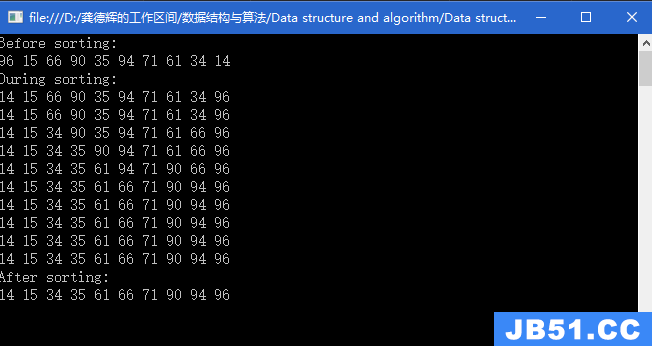1. 堆的定义:
堆(Heap) - 也叫做优先队列(Priority Queue);二叉堆是一个完全二叉树或近似完全二叉树。满足如下的两个属性:
1 父节点的键值总是大于或等于(小于或等于)它的任意一个子节点的键值(顺序性);
2 堆总是一个完全二叉树;
将根节点最大的堆叫做最大堆;根节点最小的堆叫做最小堆;
2. 堆的存储:
可以采用数组来表示堆;我们使用下标1作为数组的开始;声明数组X[n + 1],空出元素X[0],根位于X[1],它的两个子节点分别位于X[2],X[3],... ...
堆的典型定义如下(数组X满足如下条件):
{
root 节点索引:1
left child(i) 当前节点i的左子节点索引:2 × i
right child(i) 当前节点i的右子节点索引:2×i + 1
parent(i) 当前节点i的父节点的索引值:i/2
}
示例如下:X[1,... ... n]
3. 堆的操作:
两个关键的函数:siftup,siftdown:
3.1. siftup:
描述:现有数组X[1,... ...,n-1]为一个堆,插入一个新的元素在位置X[n]上,新的元素的键值可能小于其父节点,此时需将该节点向上调整,是X[1,... ... n]重新成为一个堆;
/** * @param newItem the new inserted item * @param n the current index in the array X for the newItem,initially it is the last index of the array + 1 */ void siftup(T newItem,int n) { int currentIndex = n; for (int parentIndex = ParentIndex(currentIndex); parentIndex > 0 && newItem < X[parentIndex]; ) { X[currentIndex] = X[parentIndex]; currentIndex = parentIndex; parentIndex = ParentIndex(parentIndex); } }
3.2. siftdown:
描述:现有数组X[1,... ...n]为一个堆,给X[1]分配一个新的值,重新调整使X重新满足堆的条件;
/** * @param n the replaced node index,initially n = 1,replace the root node * @param newItem the new replaced value on X[n] */ void siftdown(int n,T newItem) { int currentIndex = n; // If current node owns child node(s),check while (getLeftChildindex(currentIndex) > heapSize) { int leftChildindex = getLeftChildindex(currentIndex); int rightChildindex = getRightChildindex(currentIndex); // get the index whose item value is the less one. int minItemIndex = (rightChildindex < heapSize) ? (X[leftChildindex] < X[rightChildindex] ? leftChildindex : rightChildindex) : (leftChildindex); if (newItem > X[minItemIndex]) { X[currentIndex] = X[minItemIndex]; // swap value currentIndex = minItemIndex; }else { // exit break; } } X[currentIndex] = newItem; }
3.3. 堆插入元素insert:
描述:每次插入都是将新数据放在数组的最后;然后向上调整使其重新满足堆条件;
void insert(T newItem)
{
siftUp(newItem,heapSize);
}
3.4. 堆删除元素delete:
描述:堆中每次只能删除根节点X[1];为了便于重建堆,实际的操作是将最后一个数据的值赋给根节点,然后再向下调整,使其满足堆条件;
T delete()
{
T deletedItem = X[1];
heapSize -= 1;
siftdown(1,X[n]);
return deletedItem;
}
3.5. 堆排序:
描述:堆X[1,... ... n]建好之后,X[1]为最小的元素;将X[1]取出,放在X[n]位置上,然后将原来的X[n]放在X[1]上,向下调整,得到新的堆X[1,... ... n - 1];然后将新堆的X[1]放在X[n - 1]上,X[n - 1]放到X[1]上,siftdown得到新的堆X[1,... ... n-2];重复上面过程直到X[1]与X[2]交换为止;
void sort()
{
for (int i = n; i > 1; i--)
{
swap(X[1],X[i]);
heapSize -= 1; // reduce the heap size.
siftdown(1,X[1]); // current X[1] is the new value which is the X[i] before the swaption.
}
}
3.6. 堆操作的动态演示:
http://www.benfrederickson.com/2013/10/10/heap-visualization.html


